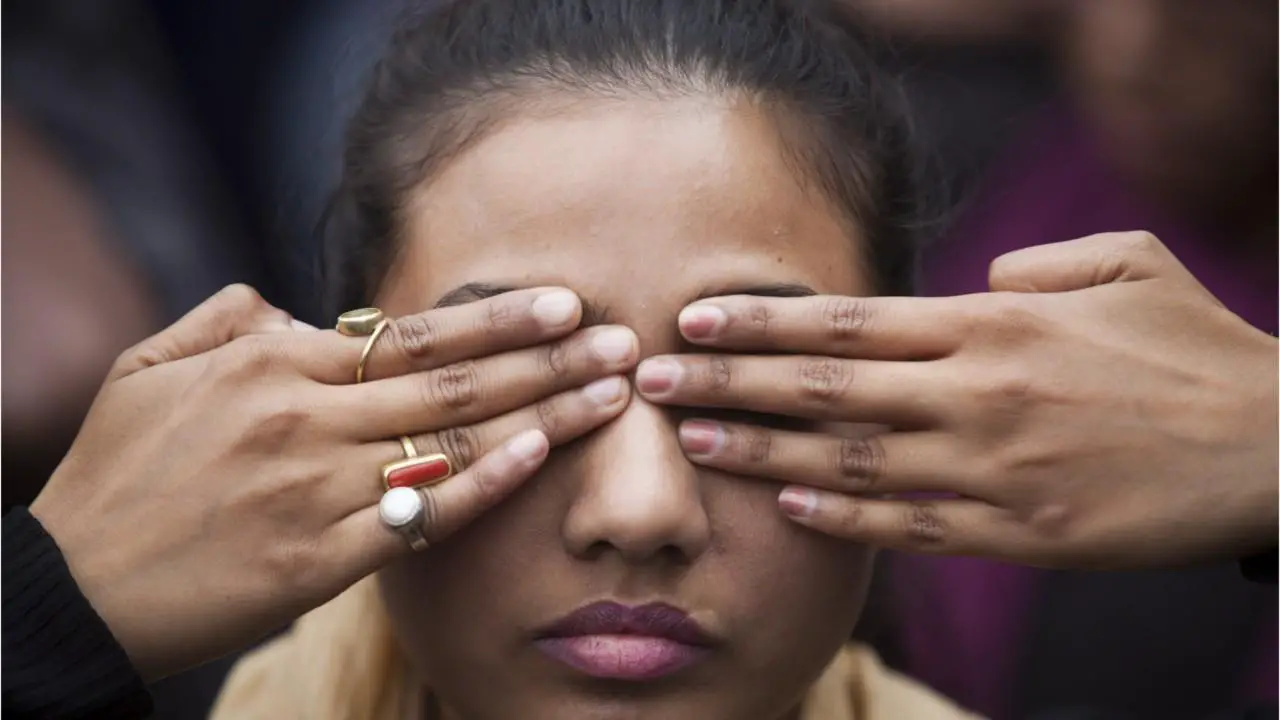No crime seems to cause as much of a controversial reaction as a rape case. Unlike other crimes, it seems like the knee jerk reaction is to accuse the victim of lying. “Crying rape,” which refers to women allegedly falsifying a rape charge, is a term commonly tossed around. Victims of any other crime, attempted murder, kidnapping, arson, burglary etc., aren’t met with this mouth-frothing suspicion and rage, so why rape victims?
The sentiment of disbelief toward rape victims has been around for hundreds of years, but has risen to a fever pitch in recent years. Just look at the vicious skepticism any victim in a high-profile case received, from the Steubenville case to Woody Allen’s daughter. Over fifty women in the past ten years have come forward with the same story of rape or sexual assault at the hands of Bill Cosby, yet the public continued to ignore them until Cosby himself finally admitted it.
A growing concern is that men need to be worried about false accusations. Paranoia about widespread fake rape charges is not limited to men’s rights activists (MRA) fringe groups bored with sending death threats, but is actually quite common within the general public. A 2011 study shows that 40.2 percent of the surveyed felt rape accusations were often false. The unmerited suspicion of false charges unfairly clouds judgment within law enforcement, legal systems and the public eye. The reality is that false rape charges account for a very small percentage of all rape charges, and that number itself is often considered unreliable due to bias.
Let’s Look at the Numbers
Despite the idea that falsified rape charges are prevalent, there is very little statistical evidence to support the claim of common fraudulent accusations.
Getting straightforward evidence pointing toward a single number is difficult. Given that many of the studies done on false rapes have employed subjective research methods or failed to base data off of actual investigations, finding accurate numbers includes wading through the outliers.
However, compiling the methodically sound, credible sources suggests that percentages of false estimates converge around the 2-8 percent mark, worldwide. The “Making A Difference Project” conducted a large-scale study, lauded for its precautions taken to protect the validity and reliability of its research, and found 7 percent of the 2,059 cases evaluated to be false. The most vigorous and largest study, done by the British Home Office and spanning 2,643 cases, found 2.5 percent of cases to be false. Researchers at the University of Massachusetts say 5.6 percent. An Australian study released in 2006 recorded a 2.1 percent false reporting rate. In 2007, an EVAWI project reported 6.8 percent.
A few studies, on the other hand, present staggeringly high numbers. For example, Professor Eugene Kanin’s 1994 study suggests that 41 percent of the rape charges made in his study were false. Police Surgeon N.M. Maclean performed a study in 1979 that found 49 percent false allegations. The percentage shoots up to 90 percent in C.H Stewart’s 1981 “A Retrospective Survey of Alleged Sexual Assault Cases.” However, all of these figures have been thoroughly debunked. In Kanin’s study, detectives, not evidence-based investigation, decided whether victims’ claims were false. Maclean employs questionable criteria for finding false cases, such as a victim not looking sufficiently disheveled. A scintillating gem from Stewart’s survey is “It was totally impossible to have removed her extremely tight undergarments from her extremely large body against her will.”
Many statistics used to justify high percentages of false rape accusations are from subjective, non-systematic research, namely the personal opinions of law enforcement officers or researchers. These studies don’t base their findings off of cases that have undergone investigation, but from judgments of detectives or officers. No jury verdict was delivered, but the victims were deemed liars all the same.
Controlling for subjective variables, such as personal judgments of victims based on mental illness, inconsistent statements or drinking, results in significantly fewer false accusations. For example, the previously mentioned British Home Office study originally found 8 percent of the accusations to be false. After controlling for the personal judgments of police officers, and using official criteria for a false allegation, the number shrunk to 2.5 percent.
Under Investigation
Even though there isn’t statistical evidence to substantiate the idea of widespread false rape charges, some people still believe it’s a very prominent problem. We have an automatic attitude of disbelief toward rape victims that directly affects investigations and trials. For example, a New Zealand study shows that police viewed 86 percent of women reporting a rape with suspicion. Victims are preemptively met with excessively hostile skepticism.
Why does this happen? We, as a society, have preconceived notions of what “real” rape is. When a case lacks the factors we associate with rape, we see it as impossible.
What are some signs of a “real” rape?
- Victim and suspect are strangers
- Physical violence/a weapon are involved
- Evident signs of a struggle/physical injury
- Victim is hysterical and immediately reports the crime
- Victim is absolutely certain about every detail of their testimony
- Victim doesn’t alter their account of the attack
- Victim behaves appropriately traumatized when recalling attack
However, these factors don’t necessarily apply for many rape cases. According to The National Center for the Prosecution of Violence, most prosecutors say their cases usually have the following factors, known as “red flags,” which make people more skeptical of the case’s legitimacy. When a case has red flags, victims have difficulty telling a credible story, because they must overcome jurors’ expectations, not just meet them.
- Rape is committed by someone known to the victim
- Most victims don’t physically resist
- No signs of physical injury
- Victim does not immediately report to the police
- Victim is not hysterical when recounting attack
- Victims fail to give a linear account, focus on sensory detail
- Victim omits or exaggerates part of their account
- Victim displays erratic behavior
- The suspect doesn’t fit the stereotype of a rapist
Expectations vs. Reality
One of the effects of red flags is seen with the jurors at a case from St. John’s University, who found the victim’s claim implausible because her behavior “just didn’t coincide with what we felt a victim should behave like.” Regarding relationships, rape is most often not a stranger violently attacking a victim in dark alley. A study by the Medical University of South Carolina found that 78 percent of the 4,008 rapes and sexual assaults were committed by someone the victim knew. When it comes to injuries, judges and jurors tend to view severe physical damage as proof of a lack of consent by the victim. However, only 5 percent of victims experience serious physical injuries.
Two other common red flags, when a victim is unable to give a chronological account or alters/omits elements of their attack, are typically used to assert that the claim is false. After all, if they gave inconsistent information about their attack or can’t remember the precise sequence of events, they must be lying, right?
Victims give inconsistent, incomplete or omitted information for numerous reasons. Neurobiology explains what happens. Often, when a victim experiences sexual assault, the pre-frontal cortex, principal in memory and decision making, can be temporarily impaired. The amygdala, which encodes emotional experiences, takes control, recording specific fragments of sensory information. According to clinical psychologist David Lisak, this is why many victims can only recall visceral sensory details, such as the sound of a voice, but can’t give a linear account.
In addition, many victims don’t immediately report an attack, also for a myriad of reasons. A wide range of factors, such as not knowing it was legally rape, using denial and suppression as a coping tactic or fearing that they will be disbelieved and blamed, all influence a victim’s willingness to report. Victims may change or omit elements of their attack, for example, to protect the perpetrator out of fear of retaliation or due to financial dependency. Even more commonly, victims are aware that their rape will only be taken seriously if it seems “real” enough. Victims may lie about drug or alcohol use, their relationship with the perpetrator or their past sexual history to sound like a more believable case.
It’s incredibly important to remember that incomplete or inconsistent information cannot be confused with a false report. A false report requires investigative proof that the crime never happened. Red flags damage the credibility of the victim in the eyes of others, but can’t be used to claim assault never occurred.
Innocent Until Proven Guilty
“So, does this mean that we have to assume the defendant committed the crime? The law books don’t say ‘guilty until proven innocent!’”
A common misconception in the U.S. legal system, especially regarding rape cases, is that to presume innocence on the defendant’s part requires assuming that the accuser is lying. In stranger rape cases, the defense can argue that the complainant failed to pick the correct attacker, but in acquaintance rape cases, this misconception surrounding innocence cripples the mind of the jury because, generally, no such assumption can be made.
Therefore, the defense will likely argue that the alleged victim has offered false testimony. In order for jurors to keep up the “innocent until proven guilty” line of thinking, they often assume that the complainant is lying. When jurors feel that they must adopt an attitude of incredulity and skepticism toward the prosecution’s evidence, it will cause them to have a hostile and suspicious view of the complaining witness.
In reality, all the presumption of innocence means is that jurors must choose a not guilty verdict if the prosecution can’t provide sufficient evidence of a defendant’s guilt beyond a doubt. It does not mean that the accuser must be proven honest beyond a doubt.
Where Does This Leave Us?
Rape cases put the burden of proving innocence on the victim. For no other crime are victims treated with such suspicion and skepticism. The false reporting rates for every other crime are the same, yet the news has yet to be filled with headlines about people calling in false robberies or arson for kicks. Yes, there are rare cases where a defendant is falsely accused, and it’s horrifying to think of innocent people sent to prison on false charges. Fabricated reports only make it even more difficult for real victims to find justice. However, false allegations are simply not the widespread problem that people make them out to be.
The issue is further stratified by race. Women of color are stereotyped as being less “harmed” by sexual assault due to the stigma that has resulted from centuries of hyper-sexualization and dehumanization. All around the world, women of color are also far more likely to be attacked, and even less likely to be believed.
To move forward, we must acknowledge the grossly unfair bias against rape victims that exists in the public eye, law enforcement agencies and courtrooms. The automatic assumption that rape victims are lying is not rooted in fact, but a product of personal and societal prejudice.















